Related Research Articles
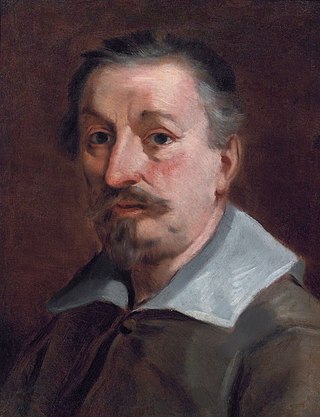
Francesco Albani or Albano was an Italian Baroque painter of Albanian origin who was active in Bologna, Rome, Viterbo (1609–1610), Mantua (1621–1622) and Florence (1633).

Giuseppe Maria Crespi, nicknamed Lo Spagnuolo, was an Italian late Baroque painter of the Bolognese School. His eclectic output includes religious paintings and portraits, but he is now most famous for his genre paintings.

The Accademia di Belle Arti di Bologna is a public tertiary academy of fine art in Bologna, in Emilia-Romagna in northern Italy. It has a campus in Cesena.
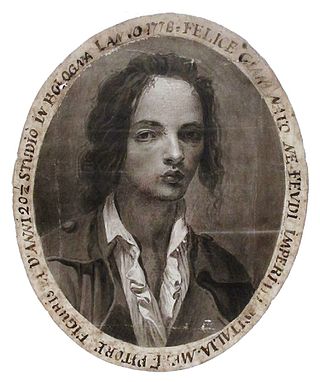
Felice Giani was an Italian painter of the Neoclassic style. His grand manner subjects often included Greco-Roman allusions or themes.

Vittorio Bigari was an Italian painter of the late-Baroque period.

Pelagio Palagi was an Italian painter, sculptor and interior decorator.

Francesco Mancini was an Italian painter whose works are known between 1719 and 1756. He was the pupil of Carlo Cignani.
Alfonso Torreggiani (1682–1764) was an Italian architect of the Rococo period, principally associated with Bologna.

Pietro Fancelli was an Italian painter and set-designer.
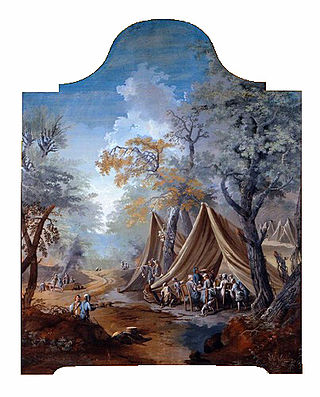
Carlo Lodi was an Italian painter of the late-Baroque period in Bologna, mainly painting landscapes.

Filippo Pedrini was an Italian painter.

The Palazzo Poggi is a palazzo in Via Zamboni 33, Bologna, Italy. It is the headquarters of the University of Bologna and of the rector of the university.

The Academy of Sciences of the Institute of Bologna is an academic society in Bologna, Italy, that was founded in 1690 and prospered in the Age of Enlightenment. Today it is closely associated with the University of Bologna.
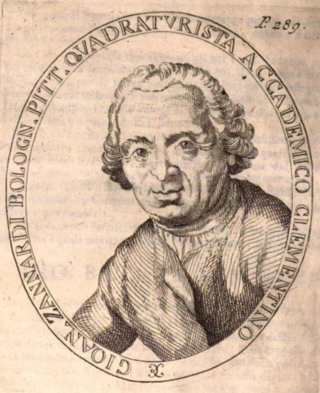
Giovanni Zanardi was an Italian painter of quadratura during the late Baroque period.
Bartolomeo Valiani was an Italian painter.

Stefano Orlandi was an Italian painter, active mainly in Bologna in the architectural perspective painting. He is known for painting fanciful architectural canvases, known as Capricci.
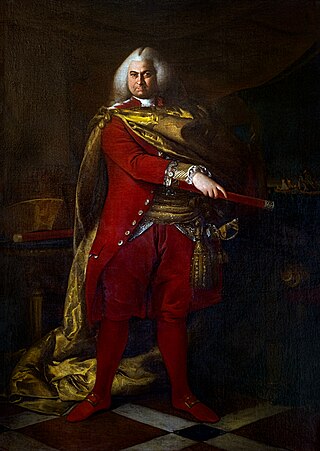
Bernardino Castelli was an Italian painter of portraits and religious figures.

Flaminio Innocenzo Minozzi was an Italian painter, mainly of quadratura. He was a pupil of his father Bernardo Minozzi, a landscape painter in Bologna. He won the Marsili-Aldrovandi Award at the Accademia Clementina and worked with Carlo Galli Bibiena. He later moved to work in Lisbon.
Vincenzo Martinelli was an Italian painter mainly painting landscapes both on canvas and fresco, mainly in his native Bologna.

Eleonora Monti was an 18th-century Italian artist best known as a portraitist. She spent much of her career in the city of Brescia, Italy, but is also affiliated with the city of Bologna. She was made an honorary member of the Accademia Clementina in Bologna in 1767, one of few women painters at the time to be recognized institutionally.
References
- ↑ Encyclopedia Treccani, Dizionario Biografico degli Italiani - Volume 74 (2010), entry by Susanna Falabella.
- ↑ Vite de' pittori bolognesi non descritte nella Felsina pittrice alla maesta di Carlo Emanuele III. by Luigi Crespi, 1769, Rome Stamperia di Marco Pagliarini, page 194-196.